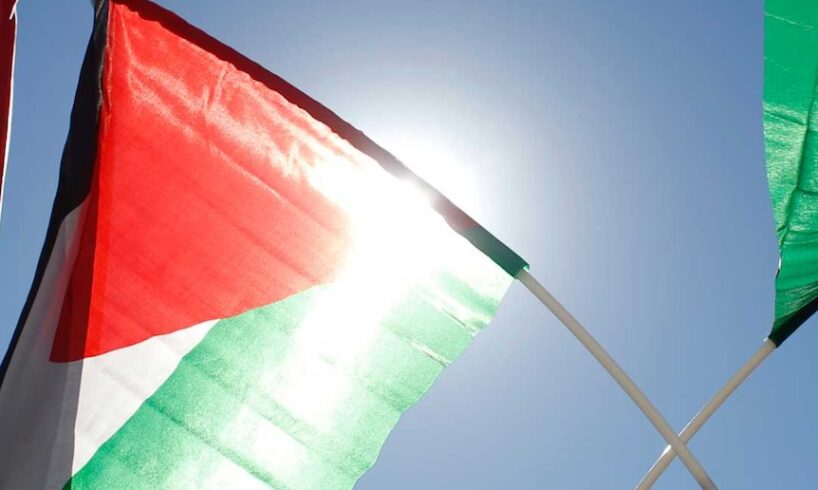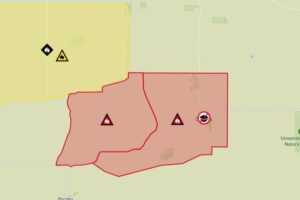
As of 2025, there are about 147 countries that officially recognise the state of Palestine.
France is set to recognise a Palestinian state at the United Nations General Assembly in September, bringing the total to 148 countries.
France to recognise Palestinian state in September
Currently, there is no Palestinian state.
Instead, there are the Occupied Palestinian Territories, which include Gaza, the West Bank and East Jerusalem.
Only the Jewish state — Israel — exists.
Some Palestinians live in Israel as citizens. Others live as refugees in Lebanon, Syria and Egypt.
Which countries recognise Palestinian statehood?
As of March 2025, the state of Palestine has been recognised as a sovereign nation by 147 of 193 member states of the United Nations, about 75 per cent.
In 2024, a group of UN experts called on all United Nations member states to recognise the State of Palestine, in order to bring about an immediate ceasefire in Gaza amid the Israel-Gaza war.
Since then, nine countries — Armenia, Slovenia, Ireland, Norway, Spain, the Bahamas, Trinidad and Tobago, Jamaica and Barbados — formally recognised the State of Palestine.
Most of the Middle East, Africa and Asia recognise Palestinian statehood.
On Thursday, France’s President Emmanuel Macron announced that France would recognise a Palestinian state in hopes it would bring peace to the region.
In response to Mr Macron’s move, Mr Netanyahu said that such a move “rewards terror and risks creating another Iranian proxy”.
“A Palestinian state in these conditions would be a launch pad to annihilate Israel — not to live in peace beside it,” Mr Netanyahu said in a post on X.
In other parts of Europe, Slovenia, Malta and Belgium are yet to recognise Palestinian statehood.
Australia, the United States, Canada, Japan and South Korea also do not.
What’s Australia’s position?
Australia does not recognise a Palestinian state.
On its website, the Department of Foreign Affairs and Trade states Australia is: “Committed to a two-state solution in which Israel and a future Palestinian state coexist, in peace and security, within internationally recognised borders.”
Australia condemns Israel as civilian death toll climbs
The Australian Palestine Advocacy Network (APAN) has argued that Australia symbolically recognising Palestinian statehood would mean “establishing a formal diplomatic relationship with Palestine”.
Australia currently has an ambassador to Israel, but only a representative to Palestine.
In recent comments, Prime Minister Anthony Albanese did not refer directly to recognising Palestine, but pointed to Australia’s long-standing ambitions around recognition.
“Recognising the legitimate aspirations of the Palestinian people for a state of their own has long been a bipartisan position in Australia,” Mr Albanese said.
“The reason a two-state solution remains the goal of the international community is because a just and lasting peace depends upon it.
“Australia is committed to a future where both the Israeli and Palestinian peoples can live in peace and safety, within secure and internationally recognised borders.”
Last year, Foreign Minister Penny Wong indicated Australia was considering recognising a Palestinian state as part of a peace process, rather than at the endpoint.
This week, Australia joined 27 other countries demanding an immediate end to the war.
In November 2024, Australia voted in favour of a draft United Nations resolution recognising “permanent sovereignty” of Palestinians and the Golan Heights to natural resources in the Occupied Territories for the first time in more than two decades.
A total of 159 countries voted in favour of the draft resolution in a UN committee, including Australia, the United Kingdom, New Zealand, France, Germany and Japan.
What would Palestinian statehood look like?
The State of Palestine was formally declared by the Palestine Liberation Organisation (PLO) on November 15, 1988.
It claims sovereignty over the West Bank, including East Jerusalem, and the Gaza Strip.
According to senior lecturer in law at the University of South Australia, Juliette McIntyre, a state has certain defining features under international law.
These features include a permanent population, a determinate territory, an “effective” government and the capacity to enter into relations with other states.
“In some ways, the most important thing is recognition by other states — this enables entering into diplomatic relations, and membership of international organisations,” Dr McIntyre said.
She added that the governance of a Palestinian state could look like “free and fair elections for all Palestinians exercising their right of self-determination”.
“It is up to the Palestinian people to elect their representatives and decide on their form of governance,” she said.
Recognising a Palestinian state could mean the beginning of a “two-state solution” where both a Jewish state and an Arab state would exist at the same time.
“A two-state solution requires two states. Israel’s occupation of Palestinian territory has been found to be unlawful.
“Recognition of Palestine is not hostile to Israel, Israel is an established state and recognition of Palestine does nothing to impact on this,” Dr McIntyre said.Loading…
The two-state solution is still widely regarded by world leaders as the only way to end the conflict, but is not as popular in Israel and parts of the occupied Palestinian territories.
“The territorial integrity of both states should be respected, and new borders could only come about by treaty agreement between both states,” Dr McIntyre said.
What are the one-state and two-state solutions?
On Wednesday, Israel’s parliament, the Knesset, voted 71-13 in favour of annexation of the West Bank, raising questions about the future of a Palestinian state.
The non-binding vote was backed by members of Israeli Prime Minister Benjamin Netanyahu’s right-wing coalition, as well as some opposition members of parliament.
In a recent post on X, Mr Netanyahu said: “Let’s be clear: the Palestinians do not seek a state alongside Israel; they seek a state instead of Israel.”
Both Mr Netanyahu and other members of Israel’s parliament have shown their lack of support for a two-state solution.
This year, the UN, which largely supports a two-state solution, will hold an international conference on the question of Palestine and the implementation of the two-state solution in New York from July 28 to 29.
The United States has opted out of attendance.





